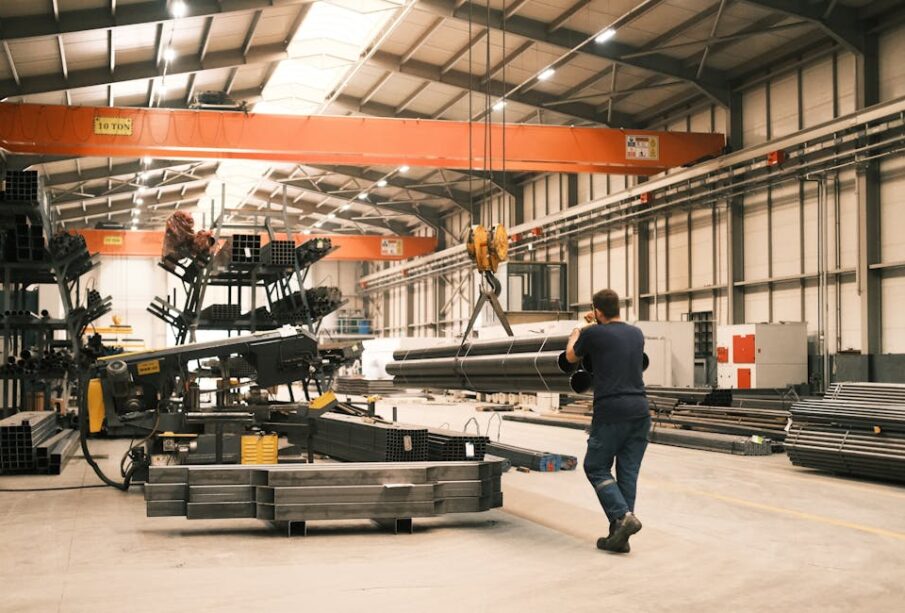Warehouse Automation: Is It Worth the Cost?

In today’s fast-paced e-commerce world, efficient warehousing is paramount. Businesses are constantly seeking ways to optimize their operations, reduce costs, and improve order fulfillment speed. Warehouse automation is a significant investment, but it can offer substantial returns. This blog post delves into the complexities of warehouse automation, exploring the potential benefits and drawbacks to help you determine if it’s the right choice for your business.
Understanding Warehouse Automation
Warehouse automation encompasses a range of technologies and systems designed to streamline warehouse operations. This includes everything from automated guided vehicles (AGVs) and robotic process automation (RPA) to sophisticated warehouse management systems (WMS) and sophisticated picking robots. The goal is to reduce manual labor, increase accuracy, and improve overall warehouse efficiency. A key aspect of automation is its ability to handle repetitive tasks and enhance speed, allowing warehouses to scale operations more effectively. Implementing automation often requires significant upfront investment in hardware, software, and integration with existing systems. However, the long-term potential for cost savings and increased productivity can be substantial, making it a worthwhile consideration for businesses aiming for growth and enhanced profitability.
Potential Benefits of Warehouse Automation
The advantages of warehouse automation are substantial. Increased efficiency is a key driver. Automated systems can handle tasks like picking, packing, and shipping orders at a much faster rate than human workers, leading to a significant reduction in order fulfillment time. This translates directly into enhanced customer satisfaction and improved order accuracy. Further, automation can significantly reduce labor costs in the long run, although there’s an initial investment. Reduced labor costs and increased throughput can improve profitability. This is especially important in competitive markets, where businesses must optimize their operations to remain competitive.
Key Considerations Before Implementing Automation
While the benefits of automation are compelling, businesses must carefully consider several factors before investing. First, a thorough assessment of current warehouse operations is crucial. This analysis should identify bottlenecks, inefficiencies, and areas where automation can have the greatest impact. Without a clear understanding of current processes, choosing the wrong automation solution can be detrimental. A realistic assessment of the current workforce is also needed. Automation often leads to a shift in the type of labor required, and businesses must be prepared for this transition, potentially involving retraining or reallocation of personnel. The financial implications of the investment, including the upfront costs, ongoing maintenance, and potential ROI, should be thoroughly evaluated. These factors need to be carefully weighed against the anticipated benefits to ensure a profitable long-term investment strategy.
Types of Warehouse Automation Technologies
- Automated Guided Vehicles (AGVs): These vehicles move goods around the warehouse autonomously, reducing the need for human intervention.
- Robotic Process Automation (RPA): Software robots can automate repetitive administrative tasks, freeing up human workers for more complex tasks.
- Warehouse Management Systems (WMS): These systems manage all aspects of warehouse operations, from inventory to order fulfillment, providing a centralized platform for tracking and optimization.
- Picking Robots: Robots can handle picking tasks, improving speed and accuracy compared to manual picking.
Conclusion
Warehouse automation can be a powerful tool for optimizing warehouse operations, but it’s not a one-size-fits-all solution. Businesses must carefully weigh the potential benefits against the significant costs and complexities involved. A thorough analysis of existing processes, workforce capabilities, and financial implications is essential before embarking on an automation project. By understanding the various types of automation technologies available and their respective benefits, businesses can make informed decisions about whether or not warehouse automation is the right investment for their specific needs. Ultimately, successful implementation relies on careful planning, strategic selection of appropriate technologies, and a clear understanding of the long-term goals.















